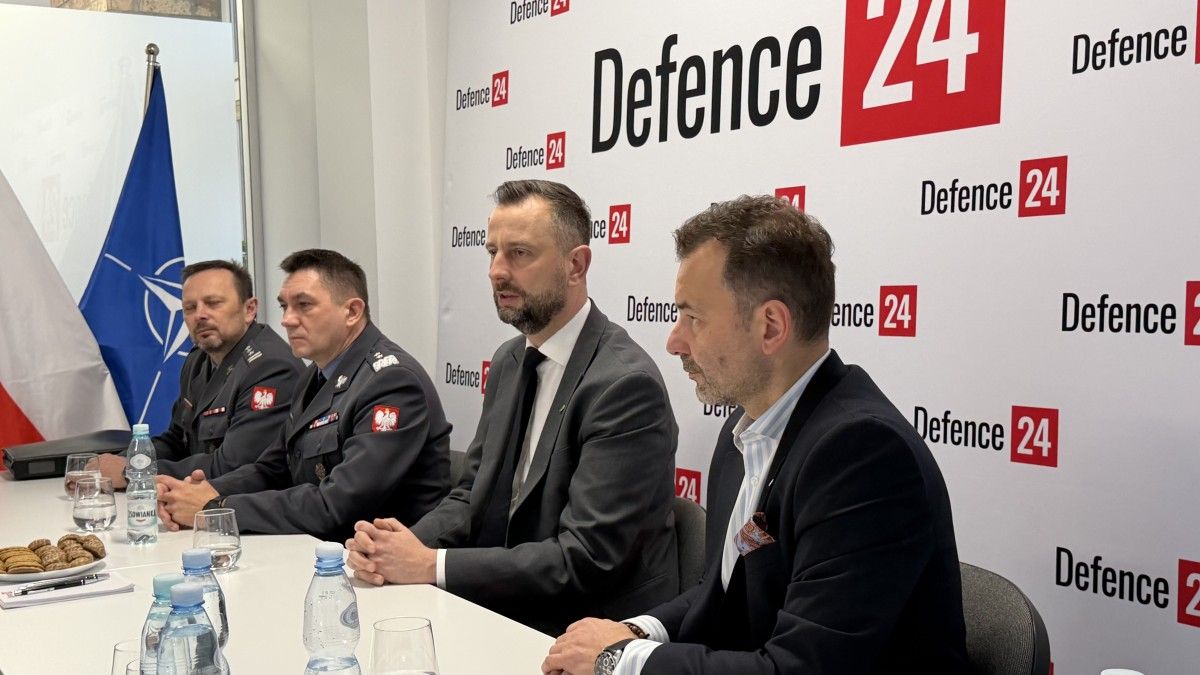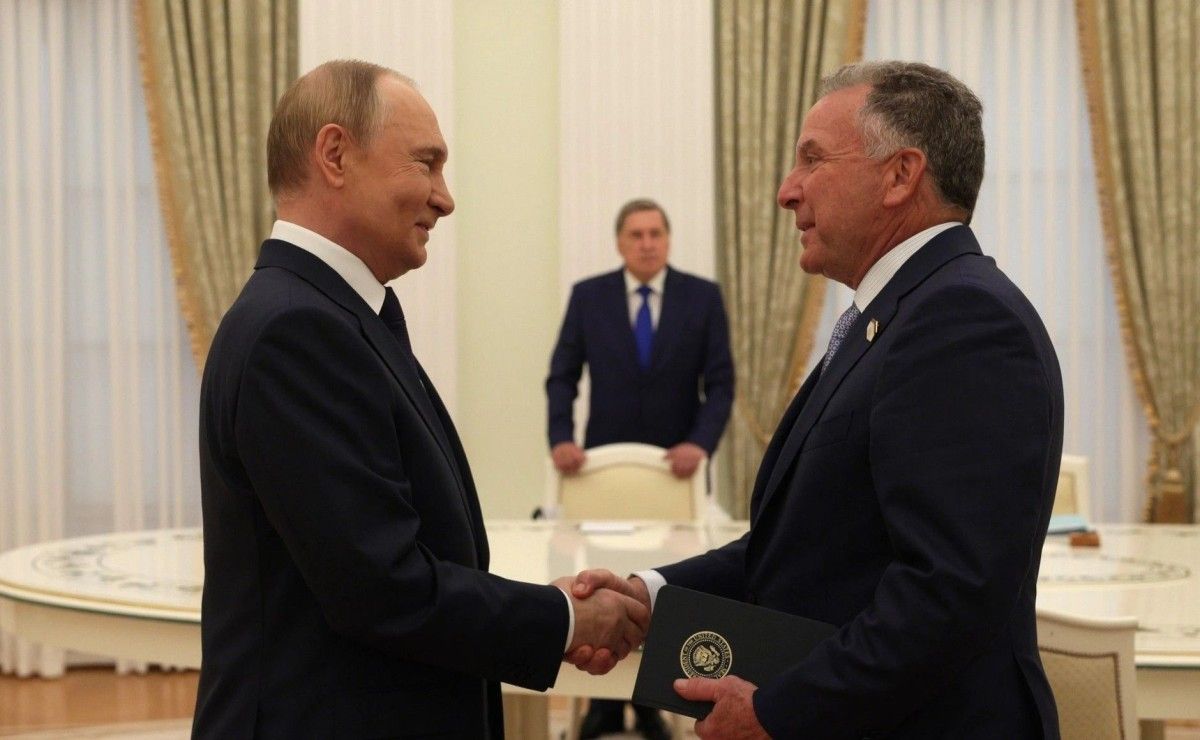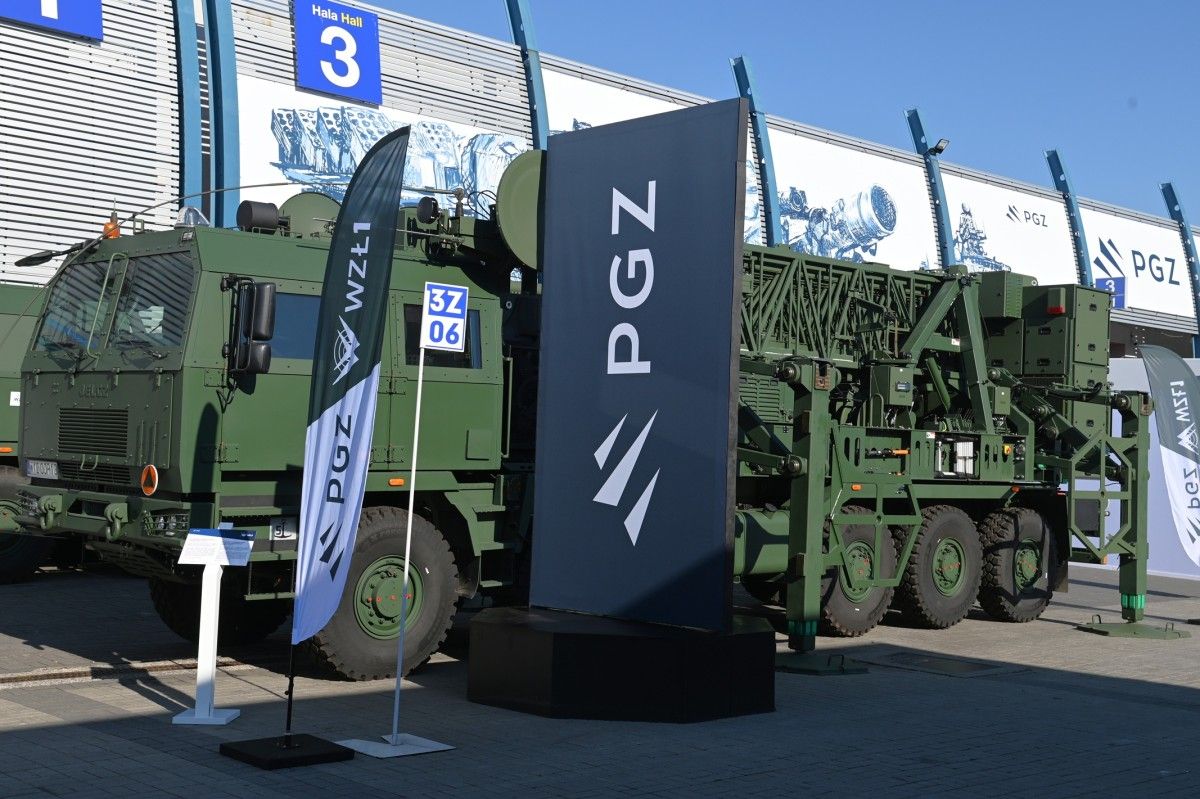W The hr of “W” on 1 August 1944, about 30 1000 insurgents under Colonel Antoni Chrusciel “Monter”, commander of the AK Warsaw District, stood to fight the German occupier in Warsaw. The uprising, calculated for respective days, lasted over 2 months and ended with a surrender on 2 October.
Insurgents in a position in the gate of the building at 11 Mazowiecka Street.
"Alarm, to the hands of the Circuit Chiefs. On 31.7 p.m. 7:00 p.m. I order ‘W’ on 1.8 p.m. [...] Receiving an order to immediately bloom" – specified an order calling for the beginning of the Warsaw Uprising issued on the evening of 31 July 1944 Col Antoni Chruściel ‘Monter’, Commandant of the Warsaw territory National Army. A fewer hours earlier, there was a gathering of the AK Headquarters, during which General Tadeusz Komorowski “Bór”, the commander of the AK, ordered to start a skirmish in Warsaw on 1 August at 5 p.m. The impulse to give the order was, as it turned out, colonel's information. “Montera” about the Red Army troops being seen in Prague.
‘W’ hour
“The intent of the uprising was to reflect the city from the hands of the Germans and welcome russian troops to the capital as host,” says Dr. Jarosław Adamczyk, historian of planet War II.
Since Colonel "Montera" had only a fewer minutes left after the order was given to him by 8:00 p.m. curfew, most of the liaisons left with an order on Tuesday, August 1. "I received the order this morning, it was encrypted, but immediately I figured out what was going on. At the time, nothing else mattered, just doing the job. I remember that there was a relaxation, a tense atmosphere came down, and I thought that we could yet get into a fight" – he told the Polish Radio Zbigniew Tracz “Zbroja”, soldier of the 7th “Ruczaj” AK Group after the war.
The hr “W” of the AK command was set at 5 p.m. so that in the afternoon traffic the insurgents headed for the collection points could be more easy hidden. In any places, however, the fighting began earlier. The first shots were fired around 13.50 at the hands of Zdzisław Sierpiński's squad soldiers, transporting weapons to the “Reaper” group. “When the squad I led with the transport of arms approached Krasiński Street, a wide artillery in Żoliborz, a car with German soldiers came from Powązek,” said Sierpinski in 1981 on Polish Radio.
An insurgent with a firearm in the window.
The insurgents opened fire towards the German airmen patrol. Unfortunately, the clashes alarmed the another German troops that planted the viaduct and the vicinity of Gdańsk Railway Station, preventing the territory from contacting Śródmieście. At 4:00 p.m. on Wola, by accident, the KG AK office located in Kamler's mill was exposed and the shooting began there.
– The order to start the rally amazed most of the commanders, lacked time to extract the weapons from the boxes and to notify all soldiers, the fight began that day according to various data of 25–35 1000 insurgents," says Adamczyk. The problem was the shortage of weapons and ammunition, and on 1 August at most a tenth of the insurgents had their own weapons. In the following days, weapons were captured at the enemy and from Allied discharges, which, unfortunately, were badly inadequate, and besides any of them fell into the hands of Germans.
Fight to the end
On 1 August, thanks to the surprise of the occupier, the insurgents seized the power station in Powiśl, the courthouse on Leszno Street, food and uniform warehouses at Stawki Street, the town hall at Teatral Square, the Military Geographical Institute building at Jerozolimskie Avenue and Prudential, the tallest building in Warsaw, at the top of which a white-red flag was placed. On the another hand, crucial strategical facilities, i.e. railway stations, bridges or airports in Okęcie, have not been acquired.
The first clashes were accompanied by an enthusiastic reaction of the civilian population. "What hit me most was the spontaneous, immediate, violent reaction of the population, which, despite the groaning bullets, went out into the streets, enjoying, laughing, crying and cheering," he recalled. Władysław Bartoszewski, during the establishment of the adjutant of the commander of the ‘Anna’ radio and information centre.
In the next 2 days, the AK troops recorded further military successes. The building of the Polish safety Printing Works, Bank Polski at Bielańska Street, Blanka Palace, the Main Post Office building at Napoleon's Square, the construction of the method University and the Post Station at Jerozolimskie Avenue, and 348 Jews were freed from KL Warschau camp at Gęsiej Street. – At the minute of the top territorial success, insurgents controlled most of the Śródmieście, large areas of Wola and Żoliborz, and smaller areas in Ochota and Mokotów – says Dr. Adamczyk.
Barricade on Żelazna Street in the junction area with Grzybowska.
Unfortunately, after these fewer days, Germany, commanded by SS General Ericha von dem Bach-Zelewski, began to counterattack and supported by aviation, dense artillery and tanks systematically mastered subsequent districts. Warsaw could not number on the aid of the Red Army, as the news of the outbreak of fighting in the capital Józef Stalin stopped the offensive of his troops on the outskirts of the city, thus issuing a judgement on Warsaw.
The Russians did not master Prague until mid-September, but did not come with the aid of the uprising. Only a fewer troops of the 1st Polish Army forced the Vistula River and after reaching the left bank supported the insurgents. “Unfortunately, they were incapable to hold the footholds in Czerniakow and Żoliborz, where nearly 5,500 Berliners were killed and injured,” says the historian.
After 63 days of conflict On 2 October, an act of surrender of the uprising was signed. During 2 months of fighting, 16–20,000 insurgents were killed, about 20,000 wounded, and about 15,000 were captured. The civilian population was besides badly affected. As researchers estimate, in shellings, raids and mass killings, lives were lost from 150,000 to 200,000 Warsawers.
About half a million residents of the capital had to leave their homes, of which nearly 150 thousand. The Germans sent them to concentration camps or drove them to forced labour inside the Reich. Warsaw was almost razed to the ground. The Red Army, along with the 1st WP Army, entered the abandoned and ruined city on 17 January 1945.
Due to the 81st anniversary of the outbreak of the Warsaw Uprising, we prepared a peculiar edition of “Polish Armed Forces”.
Feel free to read!




![KC-390 for Polish? Embraer's agreements with Polish manufacture [REPORT]](https://cdn.defence24.pl/2025/12/03/1200xpx/jZJW9wtYxnwrnPIwnDnlexRxZdVSxkiojbtHhCNL.oszu.png)



